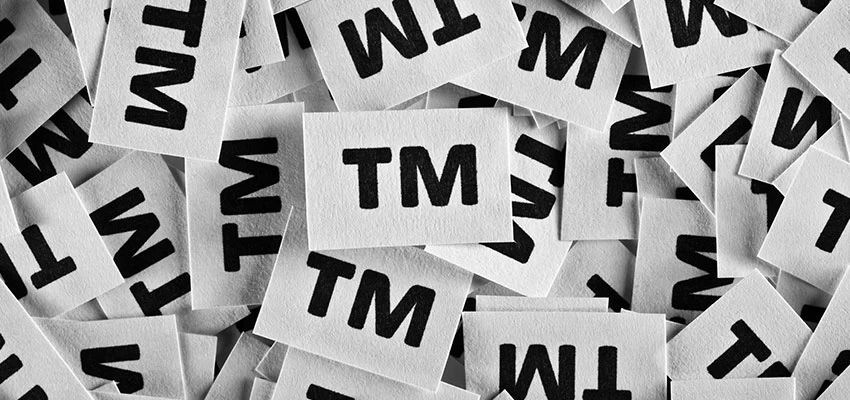With the passage of time, new technology is emerging day by day and this has resulted in a greater number of patent related disputes than ever. One of the key elements surrounding a patent dispute is the construction of the claim language, or claim construction, to determine their scope and extent of coverage. Claim construction or claim interpretation serves as the seminal step towards determination of infringement of the claim by an alleged infringer. As a rule of thumb, the claims must be construed objectively from the perspective of a person skilled in that particular art based on the language used in the claims.
The patent specification, i.e., the written description of the invention along with the accompanying drawings, remains only a fall-back option to interpret a term or terms used in the claims for which the meaning is not otherwise unambiguously derivable. However, there may often be a situation that the exact feature of the claims may not be found in the alleged infringing product or process. In other words, a literal infringement of the claims may not be a common occurrence.
Conversely, a literal assessment of claims against the alleged infringement may allow an infringer to find an easy workaround to the benefits otherwise accrued upon the original inventor and the rightful holder of patent rights. To avoid such a travesty from befalling the patentee, the Courts may and have devised tools where even if the literal language of the claim is not infringed, the rights of the inventor may be safeguarded. One such tool is the Doctrine of Equivalents and this article seeks to navigate through and analyse the jurisprudence surrounding the application of Doctrine of Equivalents in India.
The violation of the exclusive rights of the patentee without their authorization amounts to patent infringement. A literal infringement is the patentee’s most obvious choice of attack on an alleged infringer where the patentee is able to establish that the infringing product or process, as the case may be, maps to each element in the claim of the patent and the infringing product or process is commercially marketed without the permission of the patentee. However, when the infringer makes minor non-essential changes to circumvent the literal language of the claim and avoid infringement, the infringement may have to be subjected to a closer scrutiny by inter alia applying the Doctrine of Equivalents.
The Doctrine of Equivalents, essentially, provides for expanding the claim scope to a certain extent but in an equitable manner, and has evolved from various US judicial precedents. In its present form, the Doctrine is used to determine whether two devices (the one that is claimed and the other being alleged for infringement) operate in substantially the same way, and accomplish substantially the same result, and if so, they may be the same, even though they differ in name, form, or shape. Thus, even if the allegedly infringing product or process differs from the literal language of the claims, infringement may be established by the application of the Doctrine of Equivalents if the product/process in question performs the same function in the same way to obtain the same result as the claimed product/process. The factors to be borne in mind when adjudging the substantiality of the differences are as follows:
- Whether a person skilled in art would actually know of the equivalence of the two inventions in question.
- Whether a person skilled in art would have known of the equivalence of the two inventions in question.
- Whether the alleged infringer intended to copy or design around the invention to arrive at the same result.
Following in the footsteps of the US judicial decisions, the Indian courts have made several attempts to recognize and apply the Doctrine of Equivalence in India. The following discussion of various judgements in India provides an insight into the evolution of the nature and scope of the applicability of the Doctrine of Equivalents in India.
In Raj Prakash v. Mangat Ram Chowdhry & Ors., ILR (1977) 2 Del 412, decided on March 25, 1977, the Indian courts for the first time acknowledged non-literal infringement, though not purely by way of the Doctrine of Equivalents. The Plaintiff had a patent over a toy called a viewer that used a 35 mm. medially cut positive film on which were printed one or more pictures. The pictures were viewed through a lens fitted in a viewer specially adapted for use with such medially cut strips of 35 mm. positive films so as to get a virtual image of the same size as the virtual image of a normal frame in a 35 mm. film. The toy could be used to view interesting and educational pictures by children and even grown-ups. The Defendant was manufacturing and selling in the open market, film strip viewers utilizing a medially cut 35 mm. cinematograph film in viewers in a manner which was identical to and a copy of the viewers which were being manufactured and marketed by the Plaintiff. The Defendant contended that the Plaintiffs did not claim any patent for the whole film strip viewer combined. The Division Bench of the Delhi High Court held that the specifications and the claims have to be read from the point of view of the persons in the trade manufacturing film strip viewers. It was held that “It is the pith and marrow of the invention claimed that has to be looked into and not get bogged down or involved in the detailed specifications and claims made by the parties who claim to be patentee or alleged violaters”. The Court held that the Defendants had just made unessential variations to the product and, in view of that, the product amounted to the same as the Plaintiff’s claimed product. It was further held that ‘To find out whether the patent has been infringed, the patented article or process has to be compared with the infringing articles or process and unessential features in the infringing article or process are of no account and if the infringing goods are made with the same object in view which is attained by the patented article, then the minor variation does not mean that there is no piracy and a person is guilty of infringement if he makes what is in substance the equivalent of the patented article and some trifling and unessential variations has to be ignored’. Therefore, the Court held that there was non-literal infringement of the Plaintiff’s patent in view of the essential features of the claim being present in the product.
In Ravi Kamal Bali v. Kala Tech & Ors. (2008) 38 PTC 435, decided on 3 June 2008, the Court deviated from the doctrine of pith and marrow as applied in Raj Prakash v. Mangat Ram Chowdhry & Ors and, instead, preferred the applicability of the Doctrine of Equivalents. In this case, the Plaintiff (Ravi Kamal Bali) sought an injunction to restrain the Defendants from infringing his patent for a tamper proof seal for locking containers sold by the Plaintiff under the trademark ‘TECH LOCK’. The Plaintiff contended that the differences between his invention and the alleged infringing product of the Defendant were minor and inconsequential, superficial and cosmetic and were, therefore, of no consequence as the Defendant’s product performed the same function in substantially the same way and accomplished substantially the same result constituting an infringement of his patent. It was submitted by the Plaintiff that while considering the question of infringement of patents, the Court ought to apply the Doctrine of Equivalents and assess a device/process to be infringing a claim if it performs substantially the same function in substantially the same way to obtain the same result and it was not necessary that the infringing goods must be identical in every respect to the patented goods. The Defendants contended that even if their device performed the same function to obtain the same result, it did not perform the function in substantially the same way as the Plaintiff’s device. The assessment came down to the material used in one of the components, i.e., a steel spring. The Singe Judge of the Bombay High Court held that the usage or the purpose of the material produced by the Defendant was the same as that of the Plaintiff and the nature of the material was substantially the same and that marginal difference in the quality of steel accounted for no difference from the patented invention. The Court also accepted the Plaintiff’s claim that the two products functioned on the same principle and mere cosmetic or superficial difference would have no bearing on the invention as such. In view of the same constructional and functional aspects of the product as that of the patented invention, infringement of the Plaintiff’s patent by the Defendant was established.
Further, in the case of Bajaj Auto Ltd. v. TVS Motor Company, MIPR 2008 (1) 0217, decided on 16 February 2008, the Court again relied on the doctrine of equivalents to assess infringement of the patent claims by the alleged product. Bajaj Auto Ltd. had a patent granted for a four-stroke internal combustion engine that used two spark plugs for efficient combustion of the air-fuel mixture, particularly, in small bore engines with sizes ranging between 45mm to 70mm. On the other hand, TVS Motor Co. had launched two-wheelers powered by a lean burn internal combustion engine of 125CC capacity and a bore size of 54.5mm that also used a twin spark plug configuration. The Court held that except the use of three valves, TVS’ product was prima facie similar to the Applicant's patent claims. The Court held that ‘a person is guilty of infringement if he makes what is in substance the equivalent of the patented article. Some trifling or unessential variation has to be ignored.’ Therefore, it was held that Bajaj Auto Ltd. had made out a prima facie case for infringement against TVS Motor Co. and an ad-interim injunction in favour of Bajaj Auto Ltd. was granted.
In the most recent case of Sotefin SA v. Indraprastha Cancer Society and Research Centre & Ors., CS(COMM) 327/2021, decided on 17 February 2022, the Court used a combination of the doctrine of pith and marrow as well as the Doctrine of Equivalents. The Plaintiff alleged infringement of its patent for a carriage for the horizontal transfer of motor vehicles in an automatic mechanical car parking. In the present case, the Court observed that all the elements of the claim of the Plaintiff’s patent did not entirely correspond with the Defendant’s product. Specifically, based on an analysis done by scientific advisors appointed by the Court, the Court concluded that 17 sub-elements out of 19 elements of claim 1 of the suit patent were present in the Defendant’s product and only 2 elements were absent. It was, in fact, in the assessment of whether the Defendant’s product with the 2 elements in-absentia still infringed the Plaintiff’s patent or not that the Court resorted to the doctrines of non-literal infringement.
The first element that was found to be absent from the Defendant’s product were hinges which the configuration installed at the Defendants’ premises did not use. However, the Court concluded that although the Defendant’s product did not include the hinge which emulated the movement of an elbow joint, the Defendant’s product did have a structure which behaved as a shoulder joint and provided for a multi-directional movement. It was found that despite the elbow-jointed hinge in the claimed invention and the shoulder joint in the Defendant’s product, prima facie, the claimed invention and the Defendant’s product did not substantially differ in functionality and achieved substantially the same result in substantially the same way. It was also concluded that the hinge was a non-essential part of the claimed invention and even in the absence of such a hinge, the Defendant’s product did not substantially differ from the claimed invention in its operation.
Regarding the second element, i.e., immobilization of rear wheels, it was found that the claimed invention involved immobilization of the wheels at the front as well as the back of whereas the Defendant’s product had means to immobilize the wheels only at one end. The Court while applying the doctrine of pith and marrow held that this difference between the claimed invention and Defendant’s product did not have any material effect on the working of the invention. The Court held that this indicated that the variation between the two was insignificant and the Defendant’s product did not have enhanced functionality in view of the differences with respect to the claimed invention. In light of these findings, the Court held that the Defendant’s product was insignificantly different from the patented invention and that that the Plaintiff had successfully established a strong prima facie case of infringement against the Defendant.
From the above, it can be concluded that, in certain cases, the judiciary has recognized the Doctrine of Equivalents when deciding patent infringement cases, while in certain other cases, the Courts have also recognized the doctrine of pith and marrow. The doctrine of pith and marrow, as discussed above, emphasizes on the substance of invention as a whole and where even if there is a difference between an invention and an alleged infringing product or process, if that difference is insignificant, infringement may be established. In the case of Doctrine of Equivalents, it is essential to prove that every element of the patented invention or its substantial equivalent is present in the alleged infringing product or process, in conjunction with the triple identity test, i.e., performing the same function, in the same way and achieving the same result. However, especially in the Sotefin SA v. Indraprastha Cancer Society and Research Centre & Ors, it seems that the Court has brought about a realization that both the doctrines may, in the end, achieve substantially the same outcome. Therefore, as the Courts attempt to furnish sound reasoning as to the applicability of the different doctrines or their combination, it will be interesting to witness the direction in which the jurisprudence surrounding the application of non-literal infringement evolves.
[The authors are Partner, Joint Partner and Intern, respectively, in IPR practice at Lakshmikumaran & Sridharan, New Delhi]











